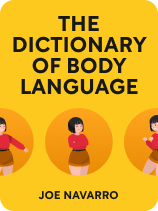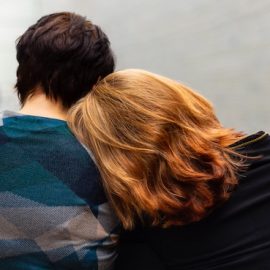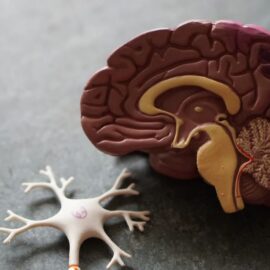

This article is an excerpt from the Shortform book guide to "The Dictionary of Body Language" by Joe Navarro. Shortform has the world's best summaries and analyses of books you should be reading.
Like this article? Sign up for a free trial here.
Can you detect confident body language in other people? Do you exhibit subtle behaviors that communicate to others that you’re confident and comfortable?
In The Dictionary of Body Language, Joe Navarro offers a reference guide that explains a wide breadth of body language cues. He argues that, with this knowledge, you can improve your relationships and understanding of other people, both at work and in your personal life.
Continue reading to learn how to tell if someone is confident at the moment.
Confident Body Language
Navarro explains that, when people are uncomfortable, angry, or afraid, they’re likely to exhibit tense, protective postures. His tips on how to tell if someone is confident indicate that you should look for the opposite: body language that’s open and relaxed.
(Shortform note: Studies suggest that open, confident body language (also known as positive body language) can positively impact the way you feel about yourself and the way you’re perceived by others. First, some researchers have found that displaying positive body language decreases the stress hormone cortisol and increases the confidence-boosting hormone testosterone. This combination triggers confidence, increased mental clarity, and a stronger ability to work under pressure. Additionally, research suggests that people view those who display positive body language as more trustworthy and likable.)
Navarro suggests that the following actions indicate comfort and confidence.
Relaxation of the Eye Muscles
Navarro states that comfortable people have relaxed muscles all around the face, especially near the eyes. In contrast, uncomfortable people show tension in these muscles, which may appear as squinting or scrunching of the skin. The muscles surrounding the eyes tend to show tension before other parts of the face, so this is a good spot to observe real-time changes in someone’s mood.
(Shortform note: Though relaxed muscles around the eyes may indicate feelings of ease, tension around the eyes doesn’t necessarily indicate internal strife: It can also be a symptom of eyestrain. Eyestrain occurs when you focus on something closely for too long—for instance, when reading a book or staring at a laptop. It can cause achy eyelids, muscle spasms of the eyes, difficulty keeping the eyes open, and headaches. Eyestrain is common, as many of us work at computers and spend a lot of time looking at smartphones every day. To prevent it, schedule periodic rest breaks for your eyes—every 20 minutes, take a break from your task and, for 20 seconds, stare at something that’s at least 20 feet away.)
Opening of the Shoulders
According to Navarro, a strong signal of confidence is extending the shoulders to be wide and open. You might observe this in people with authority and power, such as business executives. This pose contrasts with the looser, more inward posture of someone who’s less confident.
| Sitting Up Straight May Increase Our Confidence in Our Opinions While wide shoulders can reflect inner confidence, research suggests that other open postures can actually increase confidence—specifically, confidence in our opinions. In one study, psychologists asked half of the participants to sit in an upright, open posture with their chests out. They asked the other half to slouch with their backs curved. Then, they had all participants write down three positive traits or three negative traits about themselves (related to job performance). Later, they asked the participants to rate how well they’d do as a professional employee. The participants who sat upright while writing rated themselves consistently with the traits they’d previously written down, whether they chose to write positive or negative characteristics. In contrast, the participants who wrote down their thoughts while slumping rated themselves in ways that were much less consistent with the traits they originally chose. These findings suggest that the open, straight-backed posture gave participants more confidence in their opinions—whether they were positive or negative—than the less confident, closed posture did. |

———End of Preview———
Like what you just read? Read the rest of the world's best book summary and analysis of Joe Navarro's "The Dictionary of Body Language" at Shortform.
Here's what you'll find in our full The Dictionary of Body Language summary:
- A former FBI Special Agent's guide to body language
- Why you should assess body language cues collectively, not individually
- The body language cues that indicate stress, boredom, anger, doubt, and more






